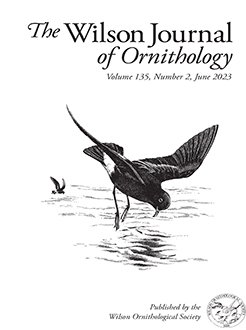Spatial patterns and dynamics are important components in understanding the relation between animals and their habitat, and how this relation changes over time. Methods for assessing spatial properties in bird populations are expensive, difficult, and intrusive, such as GPS tracking or capture–recapture, limiting our ability to measure these important characteristics. The Morisita Index and Ripley's K function are both methods used to measure the distribution, clustering, and spatial organization of organisms in a given area. The goal of this paper is to demonstrate how these 2 simple methods can be applied in ornithology studies, based on simple and easily obtained data. To exemplify the application of both methods, I use coordinate data for Southern Lapwings (Vanellus chilensis) in southern Brazil over 2 different periods: the breeding and nonbreeding seasons. The analyses show that both methods obtain similar results and indicate aggregation among birds during both the breeding and nonbreeding periods. The Morisita Index was sensitive to changes in quadrat size while variations in Ripley's K function were more difficult to interpret. Both methods have advantages and limitations that should be taken into consideration; nevertheless, the Morisita Index and Ripley's K function can be important tools in studies of ecological spatial processes and patterns in birds.
Padrões e dinâmicas espaciais são importantes componentes no entendimento das relações entre animais e ambiente, e como estas relações mudam com o tempo. Métodos para obter propriedades espaciais de populações de aves são em geral caros, difíceis e intrusivos, como uso de GPS ou captura-recaptura de animais, limitando nossa habilidade de medir essas importantes características. O índice de Morisita e a função K de Ripley são métodos utilizados para mensurar a distribuição, agrupamento e organização espacial de organismos dentro de uma mesma área. O objetivo desta pesquisa foi demonstrar como estes dois métodos simples podem ser utilizados em estudos ornitológicos, utilizando dados simples e fáceis de obter. Para exemplificar a aplicação de ambos os métodos, foram utilizados dados de coordenadas de quero-queros (Vanellus chilensis) no sul do Brasil durante dois períodos: estação reprodutiva e estação não-reprodutiva. As análises mostraram que ambos os métodos obtiveram resultados similares e indicaram o agrupamento entre os indivíduos da espécie durante ambos os períodos. O índice de Morisita foi sensível ao tamanho do quadrante enquanto variações na função K de Ripley foram mais difíceis de serem interpretadas. Ambos os métodos apresentam vantagens e limitações que devem ser levadas em consideração, apesar de tanto o índice de Morisita quanto a função K de Ripley terem se mostrados importantes ferramentas para estudos dos processos e padrões espaciais e ecológicos de populações de aves.
Palavras-chave: agregação, coordenadas, distribuição, ecologia espacial, quero-quero.





